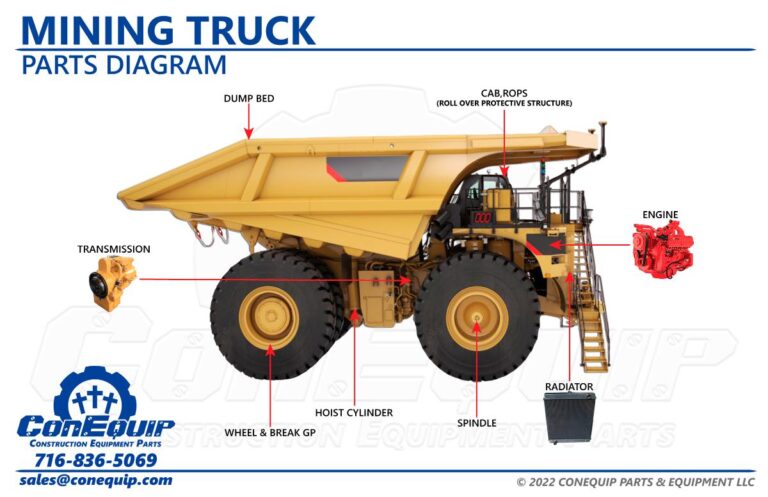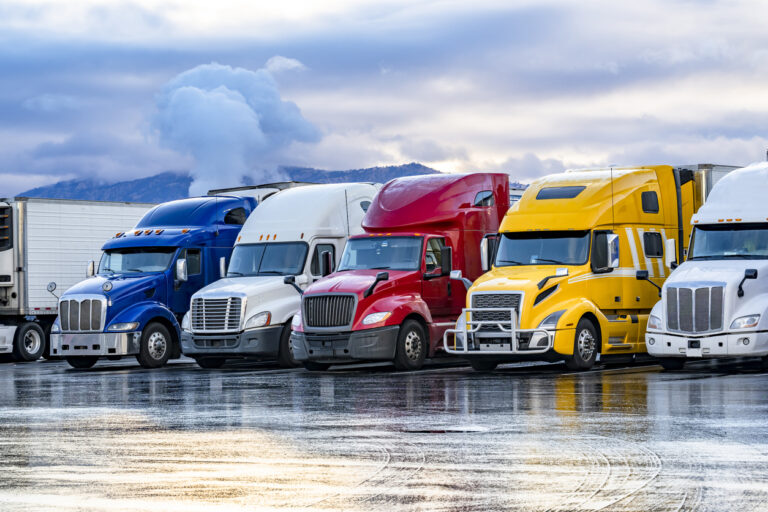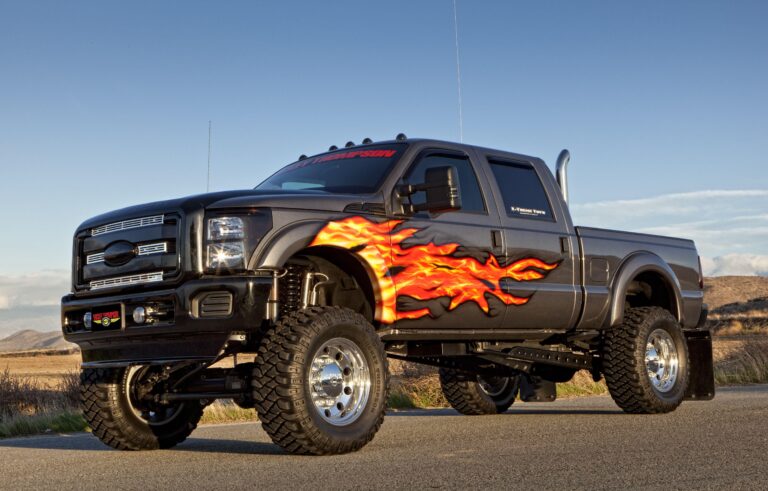Standard Box Truck Dimensions: Your Comprehensive Guide to Choosing the Right Size
Standard Box Truck Dimensions: Your Comprehensive Guide to Choosing the Right Size cars.truckstrend.com
In the world of logistics, moving, and delivery, the humble box truck is an indispensable workhorse. From small businesses making local deliveries to individuals embarking on a cross-country move, these versatile vehicles offer a contained space for transporting goods. However, the term "standard" in "Standard Box Truck Dimensions" isn’t a single, fixed number. Instead, it refers to a range of common sizes that are widely available and designed to meet diverse needs. Understanding these dimensions is not just about knowing a few numbers; it’s crucial for efficiency, cost-effectiveness, safety, and compliance.
This comprehensive guide will delve into the critical aspects of box truck dimensions, helping you navigate the options and make informed decisions whether you’re renting for a weekend move or purchasing for a commercial fleet.
Standard Box Truck Dimensions: Your Comprehensive Guide to Choosing the Right Size
The Anatomy of Box Truck Dimensions: What You Need to Know
When discussing box truck dimensions, several key measurements come into play, each impacting the vehicle’s capacity and utility.
- Length (Cargo Box): This is often the primary dimension quoted and refers to the interior length of the cargo area, measured from the front wall to the rear door. Common lengths range from 10 feet to 26 feet.
- Width (Interior & Exterior):
- Interior Width: The usable width inside the cargo box. This is crucial for determining how wide your items can be. Standard interior widths typically range from 85 to 96 inches (approx. 7 to 8 feet).
- Exterior Width: The total width of the truck, including the side mirrors. This is important for navigating narrow streets, driveways, or loading docks.

- Height (Interior & Exterior):
- Interior Height: The usable height inside the cargo box, from the floor to the ceiling. This dictates the height of items you can transport. Most standard box trucks have an interior height of 85 to 96 inches (approx. 7 to 8 feet).
- Exterior Height: The total height of the truck from the ground to the highest point (often the top of the box or a roof-mounted air deflector). This is critical for clearing bridges, tunnels, overhead wires, and garage doors.

- Door Opening Dimensions: While the interior dimensions are vital, don’t overlook the height and width of the rear door opening. Sometimes, an item might fit inside the truck but be too large to pass through the door.
- Payload Capacity: This refers to the maximum weight of cargo the truck can safely carry. It’s distinct from the truck’s empty weight.
- Gross Vehicle Weight Rating (GVWR): The maximum permissible total weight of the vehicle, including the truck itself, its fuel, passengers, and cargo. For most standard box trucks, GVWR is a critical factor for driver licensing requirements (e.g., often under 26,001 lbs for non-CDL operation).
- Gross Combined Weight Rating (GCWR): If the box truck is designed to tow a trailer, the GCWR specifies the maximum combined weight of the truck, its cargo, and any attached trailer and its cargo.

Common Box Truck Sizes and Their Applications
Box trucks are categorized primarily by their cargo box length. Here’s a breakdown of the most common standard sizes, their typical capacities, and ideal uses:
-
10-Foot Box Truck:
- Typical Interior Dimensions: 9’10" L x 6’3" W x 6’2" H
- Cubic Capacity: ~400-450 cubic feet
- Payload Capacity: ~2,500-3,000 lbs
- Ideal For: Studio or small apartment moves, local deliveries of small appliances or furniture, college dorm moves, small business errands. Easily maneuverable in urban environments.
-
12-Foot Box Truck:
- Typical Interior Dimensions: 12′ L x 6’3" W x 6’2" H
- Cubic Capacity: ~450-500 cubic feet
- Payload Capacity: ~3,000-3,500 lbs
- Ideal For: 1-bedroom apartment moves, larger local deliveries, transporting tools or equipment for contractors. A good step up from the 10-foot for slightly more volume.
-
14-Foot Box Truck:
- Typical Interior Dimensions: 14′ L x 7’8" W x 7’2" H
- Cubic Capacity: ~750-800 cubic feet
- Payload Capacity: ~4,000-5,000 lbs
- Ideal For: 1-2 bedroom apartment or small house moves, commercial deliveries requiring more space, landscaping supplies. Offers a good balance of capacity and maneuverability.
-
16-Foot Box Truck:
- Typical Interior Dimensions: 16′ L x 7’8" W x 7’2" H
- Cubic Capacity: ~800-850 cubic feet
- Payload Capacity: ~4,000-5,000 lbs
- Ideal For: 2-bedroom house moves, medium-sized commercial deliveries, retail inventory transport. One of the most popular rental sizes due to its versatility.
-
20-Foot Box Truck:
- Typical Interior Dimensions: 20′ L x 7’8" W x 7’2" H
- Cubic Capacity: ~1,000-1,100 cubic feet
- Payload Capacity: ~6,000-7,000 lbs
- Ideal For: 2-3 bedroom house moves, larger commercial freight, transporting multiple appliances or large pieces of furniture. Requires more careful navigation.
-
24-Foot Box Truck:
- Typical Interior Dimensions: 24′ L x 8′ W x 8′ H
- Cubic Capacity: ~1,400-1,600 cubic feet
- Payload Capacity: ~8,000-10,000 lbs
- Ideal For: 3-4 bedroom house moves, significant commercial hauling, bulk deliveries. Often comes with a liftgate.
-
26-Foot Box Truck:
- Typical Interior Dimensions: 26′ L x 8′ W x 8′ H
- Cubic Capacity: ~1,600-1,700 cubic feet
- Payload Capacity: ~8,000-10,000 lbs
- Ideal For: Large house moves (4+ bedrooms), extensive commercial freight, moving large equipment. The largest common size typically available for non-CDL drivers, often equipped with a liftgate.
Why Dimensions Matter: Practical Implications
Understanding box truck dimensions is paramount for several reasons:
- Matching the Load: The most obvious benefit is ensuring your cargo fits. An accurately sized truck prevents multiple trips, saving time, fuel, and rental costs. Conversely, renting too large a truck can lead to wasted money and make driving more challenging.
- Navigational Constraints: Exterior dimensions dictate where the truck can go. Bridge clearances, low-hanging tree branches, narrow city streets, residential driveways, and parking lots all pose potential obstacles. Knowing your truck’s exact height and width prevents costly damage and delays.
- Safety and Legality: Overloading a truck (exceeding its payload capacity or GVWR) is extremely dangerous, affecting braking, steering, and stability. It’s also illegal and can result in hefty fines, vehicle impoundment, and insurance complications. Understanding dimensions helps you stay within legal limits.
- Operational Costs: A smaller, lighter truck generally consumes less fuel. Tolls might also be based on vehicle size or axle count. Choosing the right size optimizes your operational budget.
- Loading and Unloading Efficiency: Interior dimensions, particularly height and door opening size, affect how easily you can load and unload. A liftgate, while adding convenience, also adds weight and can reduce effective interior length.
Key Considerations Beyond Just Length
While length is the headline dimension, overlooking these other factors can lead to significant problems:
- Interior Height and Width: Don’t just assume your refrigerator will fit because the truck is "long enough." Measure the appliance’s height and width, and compare it to the truck’s interior height and width, especially if it needs to stand upright.
- Door Opening Dimensions: This is a frequent oversight. The rear door opening is often slightly smaller than the interior dimensions due to the door frame and hinges. Always confirm if your largest item can pass through the opening.
- Liftgates: Many larger box trucks come equipped with a hydraulic liftgate at the rear. While incredibly useful for heavy items, liftgates reduce the usable interior length of the cargo box by a foot or two and add to the truck’s overall weight, reducing effective payload capacity.
- Payload and GVWR: Always prioritize these. Calculate the estimated total weight of your cargo. If it exceeds the truck’s payload capacity, you need a larger truck or must reduce your load. Remember that a full tank of fuel and passengers also contribute to the GVWR.
Practical Tips for Choosing the Right Box Truck
- Measure Your Cargo Accurately: This is the golden rule. Don’t guess. Measure the length, width, and height of your largest and bulkiest items. Create a rough inventory with dimensions for everything you plan to move.
- Estimate Cubic Footage: Sum up the cubic feet of all your items. Then, add a buffer (10-20%) for awkward shapes, packing materials, and necessary maneuvering space. Compare this total to the truck’s cubic capacity.
- Account for Maneuverability: If you’re navigating tight city streets, narrow driveways, or residential cul-de-sacs, a shorter truck will be significantly easier to handle. Consider the turning radius.
- Check Local Regulations and Access Restrictions: Some residential areas, HOAs, or commercial zones have restrictions on vehicle size, especially for parking overnight. Always check bridge clearances on your route.
- Don’t Forget the Liftgate (if needed): If you have heavy items like washing machines, safes, or large furniture, a liftgate is invaluable. Ensure the truck you choose has one and understand its weight capacity.
- Consider a Professional Assessment: For very large or complex moves, or significant commercial hauling, it might be beneficial to consult with a moving company or logistics expert who can help you determine the ideal truck size.
Challenges and Solutions
- Underestimating Space/Weight: This is the most common challenge.
- Solution: Be meticulous with measurements. When in doubt, go one size up, especially for volume. For weight, use a bathroom scale for smaller items and estimate for larger ones, always staying under the truck’s payload limit.
- Navigating Tight Spaces: Larger trucks can be intimidating to drive, especially in urban or residential areas.
- Solution: Plan your route in advance, identifying potential low clearances or narrow turns. Use a spotter when backing up. Practice driving in an empty parking lot if you’re unfamiliar with larger vehicles.
- Weight Distribution: Unevenly loaded cargo can affect handling and safety.
- Solution: Load heavy items first, placing them low and centered over the truck’s axles. Distribute weight evenly from side to side. Secure everything with tie-downs and moving blankets to prevent shifting during transit.
Common Box Truck Dimensions, Capacities, and Estimated Daily Rental Ranges
| Truck Size (Length) | Typical Interior Dimensions (L x W x H) | Est. Cubic Feet | Est. Payload Capacity (lbs) | Est. Daily Rental Cost Range (USD)* | Ideal Use Cases |
|---|---|---|---|---|---|
| 10-Foot | 9’10" x 6’3" x 6’2" | 400-450 | 2,500 – 3,000 | $19.99 – $39.99 + mileage | Studio/small apt moves, local deliveries, dorms, small errands |
| 12-Foot | 12′ x 6’3" x 6’2" | 450-500 | 3,000 – 3,500 | $29.99 – $49.99 + mileage | 1-bedroom apt moves, slightly larger local deliveries, contractor tools |
| 14-Foot | 14′ x 7’8" x 7’2" | 750-800 | 4,000 – 5,000 | $39.99 – $59.99 + mileage | 1-2 bedroom apt/small house moves, commercial deliveries, landscaping supplies |
| 16-Foot | 16′ x 7’8" x 7’2" | 800-850 | 4,000 – 5,000 | $39.99 – $69.99 + mileage | 2-bedroom house moves, versatile commercial use, popular rental size |
| 20-Foot | 20′ x 7’8" x 7’2" | 1,000-1,100 | 6,000 – 7,000 | $49.99 – $79.99 + mileage | 2-3 bedroom house moves, larger commercial freight, appliance transport |
| 24-Foot | 24′ x 8′ x 8′ | 1,400-1,600 | 8,000 – 10,000 | $59.99 – $99.99 + mileage | 3-4 bedroom house moves, significant commercial hauling, bulk deliveries |
| 26-Foot | 26′ x 8′ x 8′ | 1,600-1,700 | 8,000 – 10,000 | $69.99 – $119.99 + mileage | Large house moves (4+ bedrooms), extensive commercial freight, heavy equipment |
*Note: Rental costs are highly variable and depend on location, rental company, demand, time of year, duration of rental, and additional fees (e.g., mileage, insurance, environmental fees, taxes). These ranges are estimates for daily rentals in a typical market and do not include fuel. Always get a direct quote.
Conclusion
Understanding standard box truck dimensions is more than just memorizing numbers; it’s about making smart, practical decisions that impact your budget, time, and safety. By meticulously measuring your cargo, factoring in all relevant interior and exterior dimensions, and considering the practical implications of payload and maneuverability, you can confidently select the perfect box truck for any job. A well-chosen truck ensures a smooth, efficient, and cost-effective transport experience, proving that in the world of logistics, size truly does matter.
Frequently Asked Questions (FAQ)
Q1: What’s the difference between interior and exterior dimensions?
A1: Interior dimensions refer to the usable space inside the cargo box (length, width, height for your items). Exterior dimensions refer to the total size of the truck from the outside, including mirrors, the chassis, and the highest point of the box. Exterior dimensions are crucial for navigating roads, bridges, and parking.
Q2: What is GVWR and why is it important?
A2: GVWR stands for Gross Vehicle Weight Rating. It’s the maximum operating weight of the truck as specified by the manufacturer, including the truck’s empty weight, fuel, passengers, and all cargo. It’s crucial because exceeding the GVWR is illegal, unsafe, and can lead to fines, vehicle damage, and insurance issues. For many box trucks, a GVWR under 26,001 lbs means you can typically drive it with a standard Class D driver’s license in the US.
Q3: Can I drive a 26-foot box truck with a regular driver’s license?
A3: In most U.S. states, yes, as long as its Gross Vehicle Weight Rating (GVWR) is under 26,001 pounds. Most rental companies’ 26-foot box trucks are designed to stay within this limit to be accessible to non-commercial drivers. Always verify the specific truck’s GVWR and your state’s licensing requirements.
Q4: How do I calculate the cubic feet of a box truck or my cargo?
A4: To calculate cubic feet, multiply the length by the width by the height (all measurements must be in feet). For example, a cargo box that is 10 feet long, 6 feet wide, and 6 feet high has a cubic capacity of 10 x 6 x 6 = 360 cubic feet. Do the same for your individual items and sum them up.
Q5: Do all box trucks have liftgates?
A5: No, not all box trucks have liftgates. While very common on larger (e.g., 20-foot, 24-foot, 26-foot) commercial and rental box trucks, smaller sizes often do not. If you need a liftgate for heavy items, explicitly confirm its availability when renting or purchasing. Be aware that a liftgate reduces the effective interior length and payload capacity slightly.






